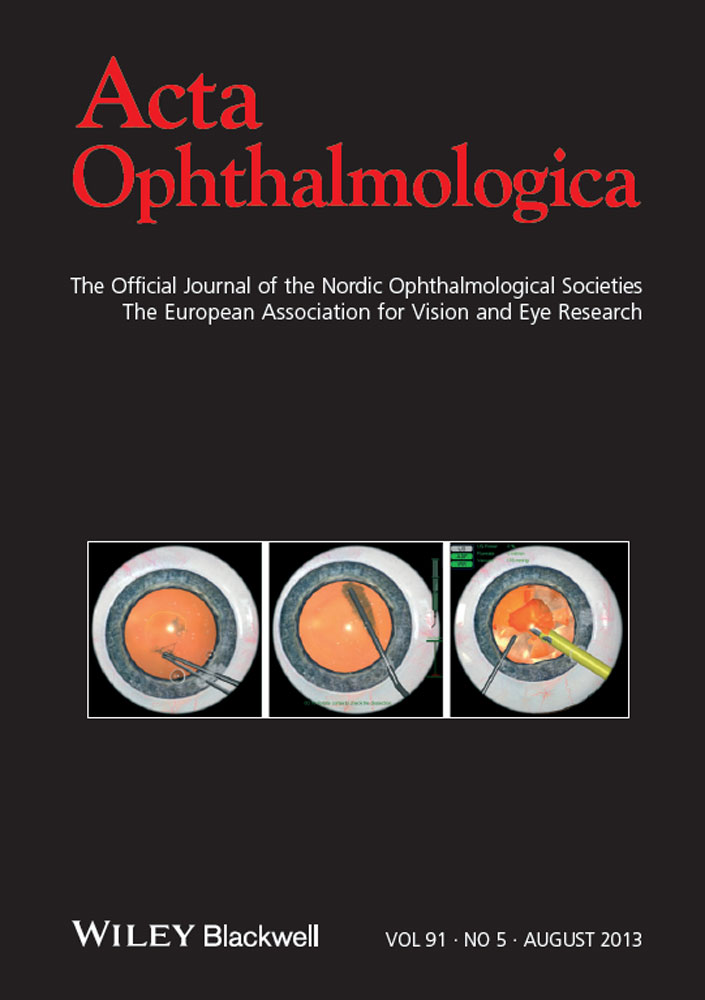Effect of simvastatin on retinal vascular caliber: the Age-Related Maculopathy Statin Study
Editor,
Statins (hydroxymethylglutaryl-CoA reductase inhibitors) have multiple actions on large blood vessels in addition to its primary action as a cholesterol-lowering drug (Antonopoulos et al. 2012). Small short-term studies showed that statins increased blood flow in retinal vessels (Nagaoka et al. 2006), increased vasodilatation, and improved endothelial function in patients with hypercholesterolemia, probably through an increase in nitric oxide (Terai et al. 2011). However, the long term effect of statins on retinal vasculature has not been reported, especially in randomized prospective studies.
We performed a sub-analysis of the Age-Related Maculopathy Statin Study (ARMSS) data (Guymer et al. 2008) to assess the impact of statins on retinal vascular caliber changes compared to placebo treatment. Briefly, ARMSS is a randomized controlled trial examining the effect of simvastatin 40 mg intake versus placebo in preventing the progression of age-related macular degeneration (AMD), with 114 subjects aged ≥50 years at baseline who were at high risk of progression of early AMD and had cholesterol levels within normal limits. This analysis included 102/114 (89.5%) of the ARMSS population. From the 114 initially randomized participants, nine did not attend any follow-up examination (five due to poor health, three for personal reasons, one from an adverse reaction to statin); one participant was enrolled incorrectly having advanced AMD in both eyes; one developed epiretinal membranes in both eyes that obscured central retina, and one participant had suboptimal fundus image quality for vessel caliber assessment. Thus 52 participants randomized to placebo and 50 randomized to simvastatin were included in this report. Retinal vessel calibers were calculated as the central retinal artery and vein equivalents (CRAE and CRVE) using standardized imaging software (Retinal analysis ‘IVAN’, University of Wisconsin, WI). We used a modified protocol limiting the measurement to the vessels in the temporal area of at least three biggest vessels (correlation coefficient for vessel caliber measurements between the standard ‘biggest 6’ method and current ‘biggest 3’ method >0.92).
Over a 3-year follow-up period, we observed a significant increase in retinal arteriolar caliber by 4.44 μm in the simvastatin group (p = 0.011), while this was not significant in the controls (1.58 μm, p = 0.397) (Table 1). Retinal venular caliber decreased by 1.34 μm in the simvastatin group, and increased by 4.11 μm in the control patients although both differences were not statistically significant (p = 0.218 and 0.181, respectively) (Table 1). Between the simavastatin and control groups, the former had significantly larger retinal arteriolar caliber change compared to controls (+6.42 μm, p = 0.044) after adjusting for age, gender, smoking and retinal venular caliber (Table 1).
| Mean retinal vessel caliber size at baseline (SD) | Mean retinal vessel caliber size at follow-up (SD) | Difference [Follow-up] – [Baseline] (95%CI) | p-value* | Difference between Statin group versus controls | ||
|---|---|---|---|---|---|---|
| Mean difference (95% CI) | p-value** | |||||
| CRAE (μm) | ||||||
| Simvastatins | 119.68 (15.2) | 124.12 (14.1) | +4.44 (0.99, 9.08) | 0.011 | +6.42 (0.18, 12.67) | 0.044 |
| Controls | 121.21 (14.8) | 122.79 (16.9) | +1.58 (5.39, −2.01) | 0.397 | ||
| CRVE (μm) | ||||||
| Simvastatins | 171.18 (24.4) | 169.90 (25.7) | −1.28 (−6.83, 4.16) | 0.218 | −7.33 (−15.69, 1.03) | 0.083 |
| Controls | 167.14 (16.8) | 171.25 (18.6) | +4.11 (−1.63, 10.12) | 0.181 | ||
- SD = standard deviation; SE = standard error; 95% CI = 95% confidence interval; CRAE = Central Retinal Artery Equivalent; CRVE = Central Retinal Vein Equivalent.
- * p-value for the difference between Baseline and Follow-up using the Wilcoxon matched-pairs signed rank test.
- ** p-value for the difference between Statin group versus controls using multiple linear regression models adjusting for age, gender and smoking plus additional adjustment with CRAE for CRVE and vice versa.
We found the simvastatin group to have significantly larger retinal arteriolar caliber compared to the control group over 3 years of follow-up. Based on our findings, we speculate that statins may have beneficial effects on retinal vessels, potentially reflecting improvement in endothelial function even in those without hyperlipidemia (Antonopoulos et al. 2012). This is because narrower retinal arteriolar caliber has been shown to be associated with cardiovascular risks such as aging, high blood pressure and NO-dependent endothelial dysfunction (Sun et al. 2009). Moreover, the decreasing trend in retinal venular caliber in the simvastatin group compared to controls (−7.33 μm, p = 0.083) (Table 1) can be partially explained by the beneficial effect of simvastatin in reducing inflammation which has been linked to retinal vasodilation (Sun et al. 2009; Antonopoulos et al. 2012). Or, autoregulation of the constant blood flow could result in a compensatory constriction of the venules as a response to arteriolar dilation.
The strength of our study is its randomized controlled prospective design, detailed AMD grading and precise vessel caliber measurements. Since our study included patients with higher risks to AMD and normal cholesterol levels, care should be exercised before generalizing our findings to other populations.
In summary, we found a significant retinal arteriolar dilation over 3 years in persons without hyperlipidemia taking simvastatin compared to control patients with placebo treatment. Potentially, statins may contribute to the prevention or management of retinal vascular diseases related to cardiovascular risks and inflammation.




